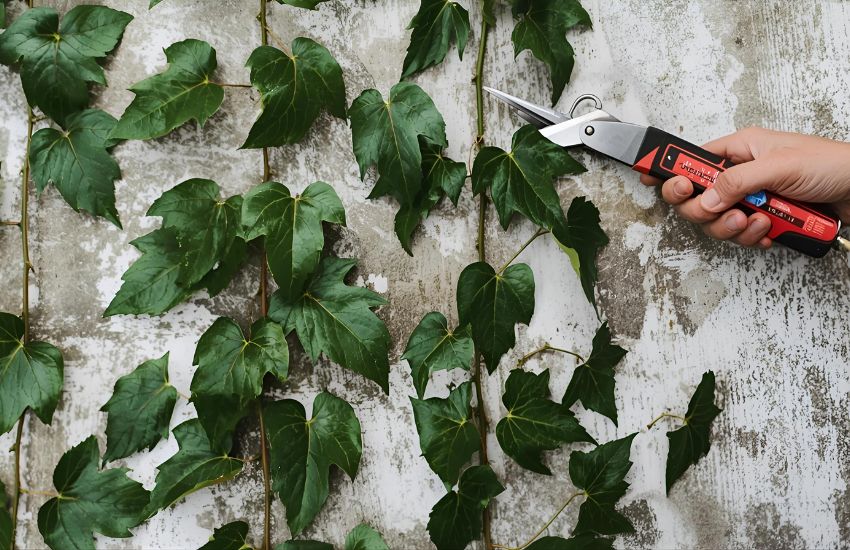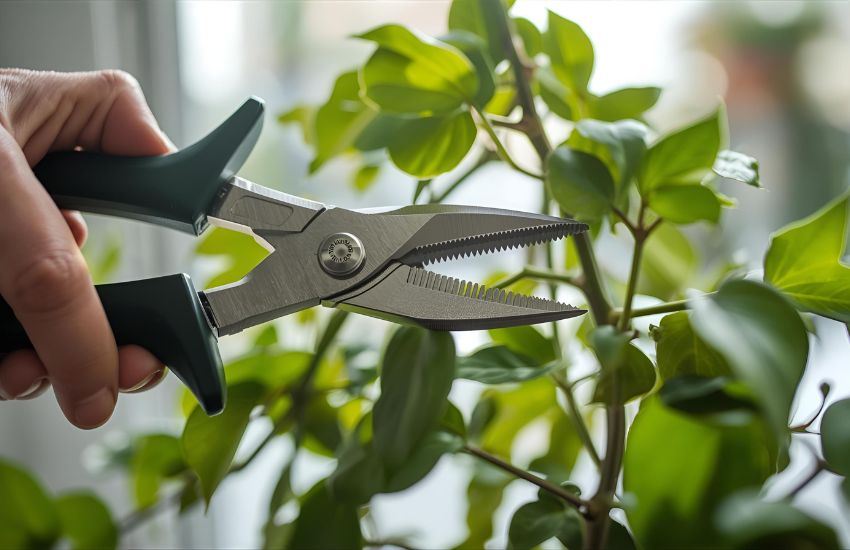Trimming your houseplant vines can transform their appearance, health, and overall growth, but knowing exactly where and how to cut can feel overwhelming. Each plant has unique stems, branches, and buds that respond differently to pruning. If left unchecked, vines can overgrow, develop yellowing or brown leaves, or become susceptible to disease. By learning the right techniques, you can encourage fuller foliage, stimulate new growth, and even promote flowering in some species.
To trim your houseplant vines, use clean, sharp scissors or pruning shears. Cut just above a leaf node to encourage new growth. Remove any yellow, damaged, or leggy stems to keep the plant healthy and full. Regular pruning promotes bushier growth and prevents overgrown, tangled vines.
To prune plants effectively, it’s essential to understand when and how to cut, which stems to remove, and how to handle delicate buds without damaging the plant. Using the proper shears or scissors, knowing when to pinch or trim, and understanding how to cut back branches during the growing season all contribute to a healthier, more vibrant plant.
In this guide, you will discover practical tips to trim any houseplant vine with confidence. From identifying which stems and leaves to remove, to encouraging new growth and maintaining overall plant health, this blog will provide step-by-step guidance to help your indoor garden thrive beautifully.
Expert Plant Trimming Guide: When and Where to Cut Vines

Trimming your plants is more than a simple aesthetic choice—it’s essential for maintaining healthy growth and vibrant foliage. When caring for houseplant vines, understanding the right time and place to cut can make a significant difference in their overall development. Whether your indoor vine has brown leaves, spent flowers, or dead leaves, removing these parts promptly encourages new growth and helps prevent disease or pest infestations.
Proper pruning begins with inspecting each vine carefully. Use a clean pair of sharp pruning shears to cut away dead or dying leaves and stems, focusing on areas where the main stem or branches are overcrowded. For plants like palms or climbing indoor vines, trimming at the base of the plant or just above a node ensures you stimulate fuller growth and a better bloom. Always remove dead or crispy foliage to prevent it from affecting nearby healthy leaves and branches.
Timing is crucial for success. Most vines respond best to pruning and cutting during the spring or summer when they are actively growing. This technique allows you to control the vine’s shape, prevent it from overgrowing, and maintain a balanced variety of stems and leaves. Even outdoor plants benefit from this careful approach, but indoor houseplants require extra attention to detail and hygiene. By following these steps, you can trim your plants effectively, encouraging a lush, healthy, and thriving indoor garden.
Top Tips to Trim Your Plants Without Harming the Vines

Identify Nodes to Encourage Growth
The first step in trimming your houseplant vines is to locate the nodes along each stem. Nodes are the points where leaves and branches emerge, and they are essential for new growth. When you snip just above a node, you encourage the plant to grow stronger, fuller, and bushier stems without harming the main structure. Avoid cutting too close to the base, as this can stress the vine or slow down new growth. Understanding where each node is allows you to prune precisely and maintain the natural shape of your plant.
Use Sharp, Clean Tools
Proper tools are crucial for healthy pruning. Always use a clean pair of sharp pruning shears or scissors to make precise cuts. Dull tools can crush stems and damage nodes, slowing growth. Regularly removing woody, brown, or unhealthy sections of your vines improves airflow and light penetration, which reduces the risk of pests and disease. Clean tools and careful cuts help maintain a compact, well-structured plant while encouraging healthier foliage.
Trim Regularly for a Fuller Appearance
Trimming your vines consistently is key to maintaining a fuller appearance. Snipping selectively and regularly helps you remove dead or crowded leaves and stems, encouraging new shoots to grow. By following this technique, you can improve the overall vitality and visual appeal of your indoor vines. Regular trimming keeps the plant compact while promoting a balanced structure and vibrant foliage. Over time, your attentive care will result in healthier, thriving houseplants with lush, dynamic growth that enhances any indoor space.
Conclusion
Trimming your houseplant vines is more than a simple chore—it’s an essential practice for maintaining healthy, vibrant growth. By understanding when and where to cut, identifying nodes, and using sharp, clean tools, you can promote fuller foliage, encourage new shoots, and prevent disease or overcrowding. Regular, careful pruning helps your vines maintain a balanced structure while enhancing their overall vitality and visual appeal.
With consistent attention and the right techniques, your indoor vines will thrive, creating lush, dynamic greenery that transforms your space. Start incorporating these pruning practices today to enjoy healthier, more vibrant houseplants and a flourishing indoor garden.
Frequently Asked Questions (How to Trim Your Plants: Pro Tips to Prune Any Houseplant Vine)
How to properly prune indoor plants?
To properly prune indoor plants, use clean, sharp scissors or pruning shears. Remove dead, yellowing, or damaged leaves first. Trim leggy stems to encourage bushier growth. Cut just above a leaf node or joint at a 45-degree angle. Avoid over-pruning to prevent stress and ensure healthy growth.
What are the five rules of pruning?
The five rules of pruning are: 1) Use clean, sharp tools to prevent disease. 2) Remove dead, damaged, or diseased branches first. 3) Cut at a 45-degree angle above a bud. 4) Avoid over-pruning to maintain plant health. 5) Prune at the right season for each plant.
How to trim vine house plants?
To trim vine house plants, use clean, sharp scissors or pruning shears. Cut back overgrown or leggy stems just above a leaf node to encourage branching. Remove dead or yellowing leaves. Regular trimming maintains shape, promotes healthy growth, and prevents the vine from becoming unruly indoors.
What are the 3 C’s of pruning?
The 3 C’s of pruning are Cut, Clean, and Care. Cut refers to removing dead or unwanted branches, Clean means trimming for better airflow and light penetration, and Care emphasizes proper techniques to prevent damage and support healthy plant growth. These principles ensure strong, thriving plants.
